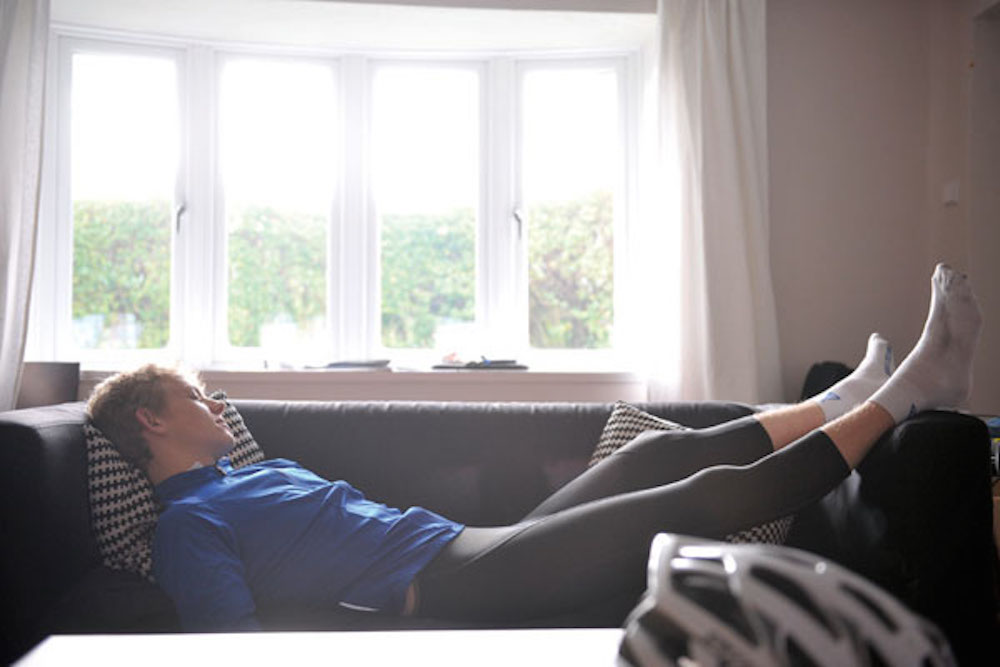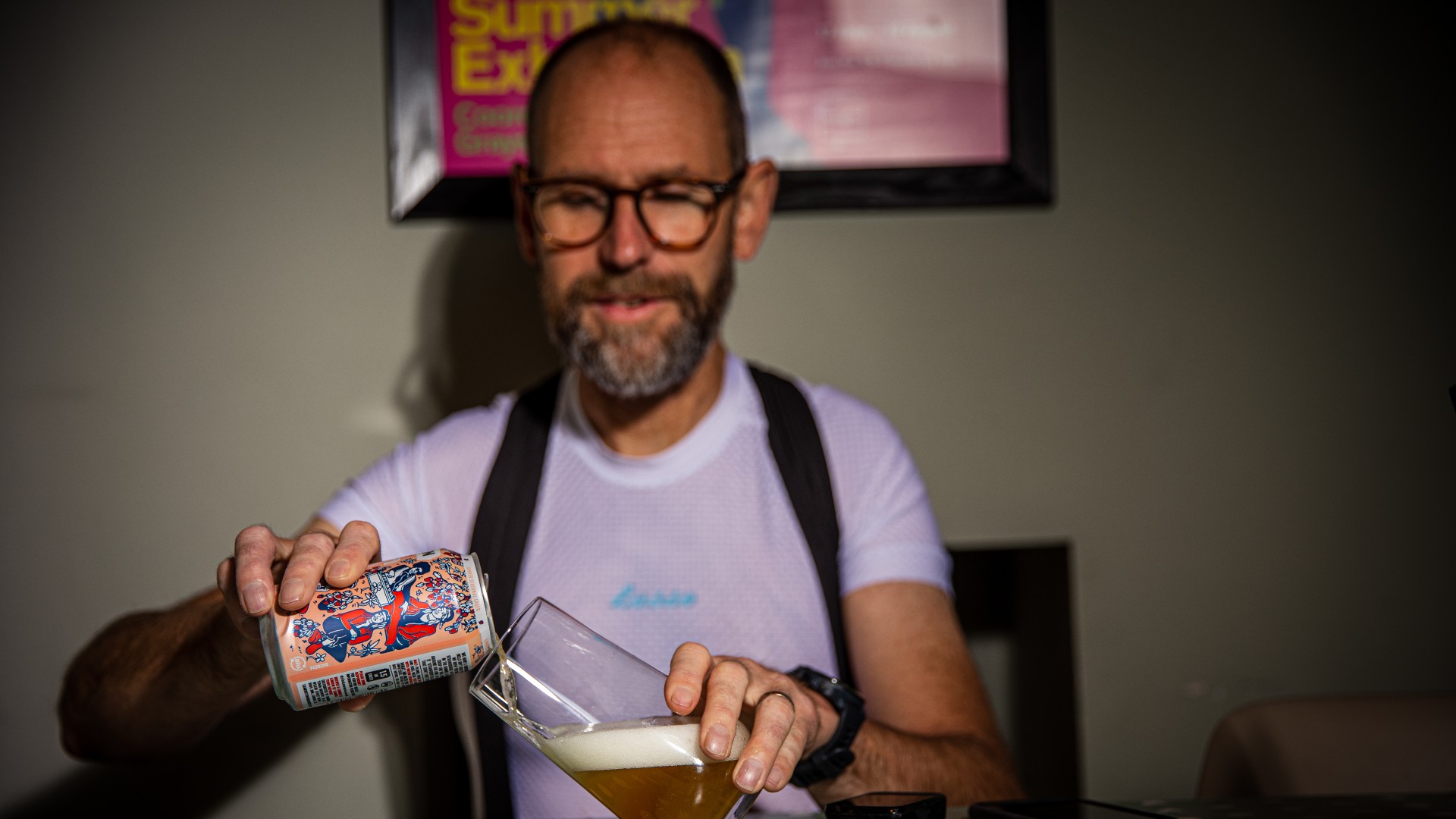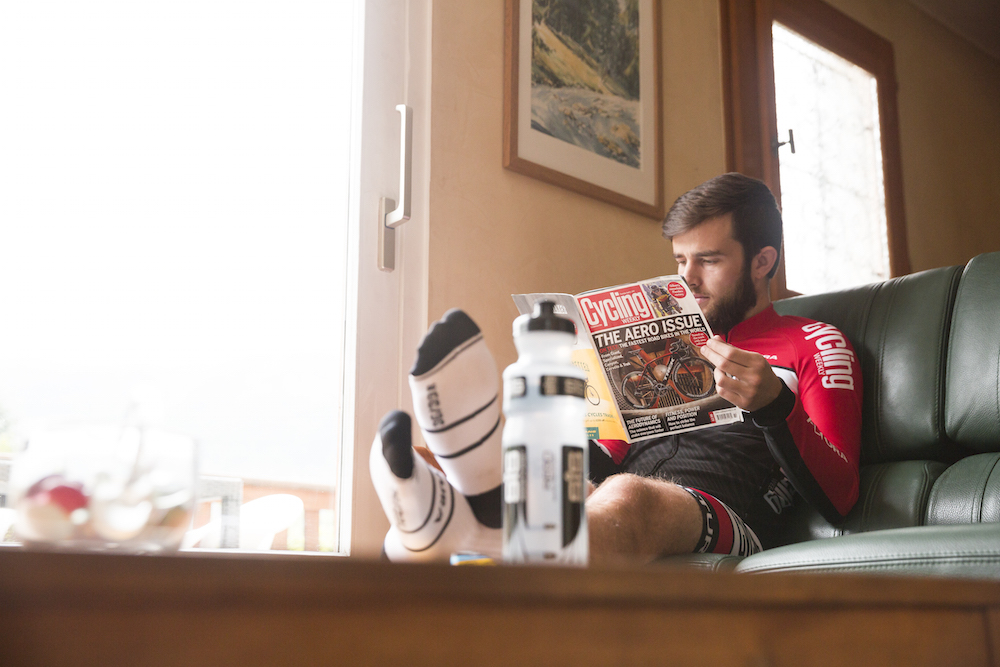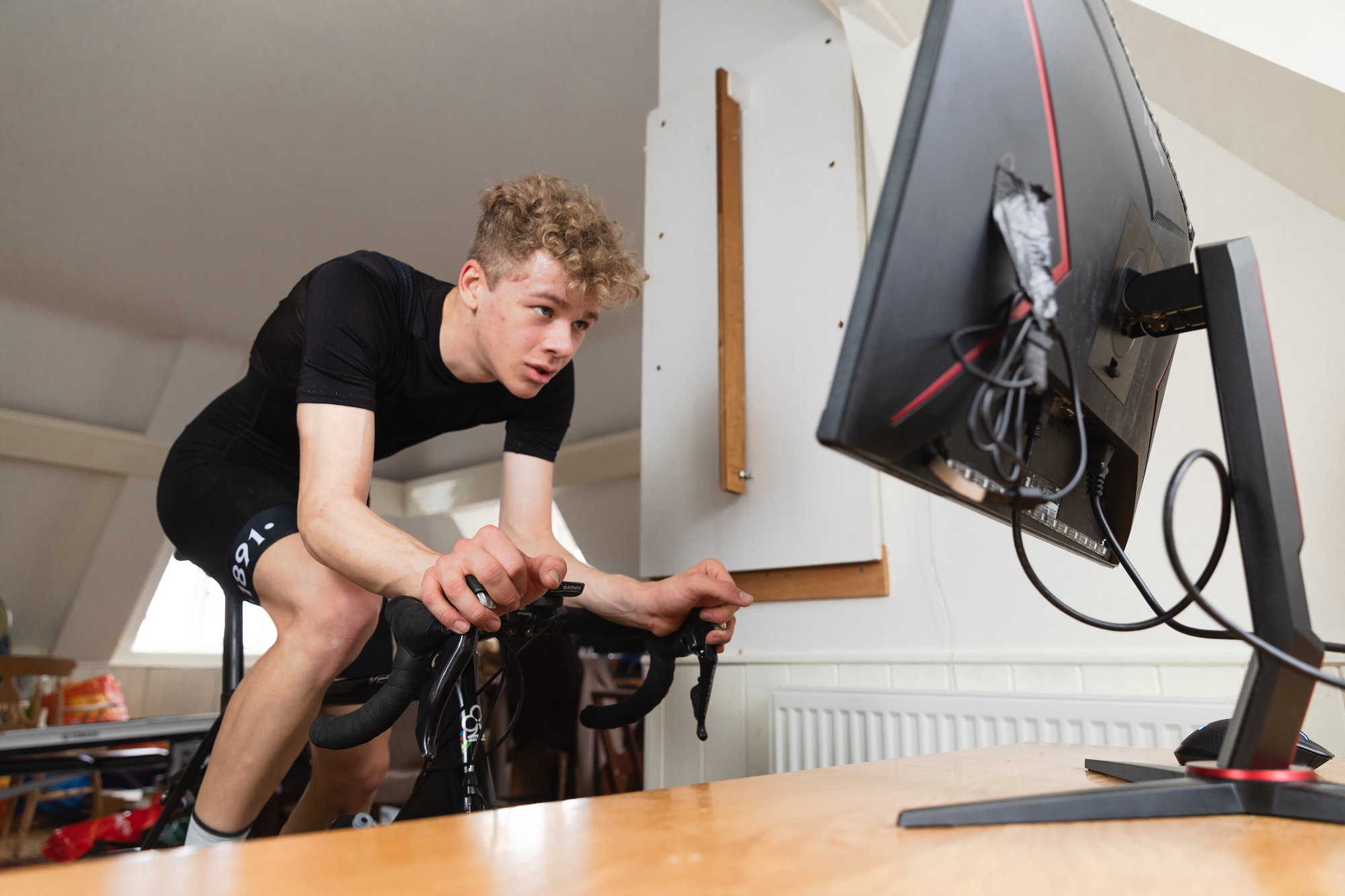The truth about detraining: How quickly do you lose fitness when you stop cycling?
Detraining is something that professional cyclists do on purpose, but it's a practice that should be entered into with a full knowledge of the facts, explains cycling coach Zach Nehr

There are countless reasons that you would take a break from cycling. Some are forced, such as the result of a crash, injury, or illness. Sometimes it just comes down to priorities, and family stress or a job change comes first. Other times we are simply burnt out, we’ve been chugging along for years, and the bike doesn’t bring us the joy it used to.
No need to fear – taking a break from cycling is a normal occurrence in the life of a cyclist, and one that many argue promotes longevity rather than hampers it. Top professionals take 1-2 months off every year, and sometimes even more. This is the time for a reset, both physically and mentally, and there is nothing wrong with that.
If you are reading this article, you are probably a cyclist who enjoys riding their bike, and the word ‘detraining’ sounds like the worst thing that could ever happen. All those years, all those training rides, the new bikes and fresh kit, the aero wheels and power meters and nutrition products that you bought to make yourself 1% faster… All of that work would go down the drain if you stopped riding your bike for just a few weeks.
Or would it?
Detraining can happen in many different ways – sometimes it is good for your body and mind, while other times, it could send you into a tailspin. Some detraining methods are quite sustainable, while others should be avoided at all costs. In this article, we’re going to tell you everything you need to know about detraining, including how fast you’ll lose your fitness, how fast you can regain it, and a new method for preserving your fitness with minimal time investment.
HOW QUICKLY WILL YOU LOSE YOUR FITNESS?

Of course, rest is a vital part of training, which means that detraining won’t occur the second you stop riding your bike. If you take one or two days off, your physiology won’t do anything except get stronger as it repairs and recovers from all of your recent training efforts.
In those first few days off the bike, your body has time to refill its muscle glycogen stores and repair damaged muscle fibres while you sit on the couch. It’s when you get past three, four, or five days that your fitness starts going into reverse, you could say – over-resting rather than recovering, and getting weaker instead of stronger.
The latest race content, interviews, features, reviews and expert buying guides, direct to your inbox!
Studies have shown that after roughly 5-7 days of detraining (i.e. the cessation of training), VO2max decreases by about 5% in endurance-trained athletes, mostly due to a significant decrease in blood volume.
In just three days, your blood volume can be reduced by as much as 12%, which means that your heart will not be able to pump as much oxygenated blood to your muscles during exercise. This leads to an overall decrease in your aerobic capacity, a reduction in cardiac output, and an increased reliance on the anaerobic system.
In this short period of time, some metabolic changes occur within the body, including the reduction of muscle glycogen stores, and increased blood lactate levels. If you haven’t guessed already, this leads to a significant drop in your FTP in the first week of detraining.
HOW MUCH FITNESS YOU WILL LOSE IN THE FIRST FEW WEEKS OF DETRAINING

Continuing the detraining journey, we have made it to another turning point in the process: multiple weeks of detraining. If it hasn’t already happened, you will experience significant physiological changes and performance declines after more than 12 days of detraining.
Stroke volume - the amount of blood pumped with each heartbeat - can be reduced by 10% to 17% in just 12-21 days of detraining, along with reduced cardiac output, and a 20% decrease in left ventricle mass, the crucial heart chamber that pumps oxygenated blood throughout our body.
Some studies have shown decreases of 8% to 16% in VO2max - the maximal volume of oxygen that can be inhaled and absorbed by a body - in just a few weeks of detraining, as well as reduced power output at VO2max. All of this means that power output over hard efforts will be reduced; it’s all sounding pretty bleak for us cyclists.
Another interesting note in these studies was that better-trained athletes experienced larger decreases in VO2max. However, the most significant detraining effects occur within the first few weeks, and after that, our body is remarkably good at maintaining a decent level of fitness.
HOW MUCH FITNESS YOU WILL LOSE IN THE FIRST FEW MONTHS OF DETRAINING

Many of the aforementioned studies followed their detrained subjects through multiple months of detraining, but found little performance degeneration after the opening period. In fact, one study found that VO2max decreased by 6-20% over multiple months of detraining. Now think back to the first few weeks of detraining – most subjects saw decreases of 8-16% in their VO2max.
This suggests that the majority of detraining – at least, the physiological and performance effects – occur in the first few weeks. After that, physiological markers may continue to decline, but not at a rapid rate. Declines in VO2max seem to cease after eight weeks, according to some studies.
One possible takeaway here is that if you’re going to take a break, take a long one. Rather than taking multiple one-to-two week breaks throughout your cycling season, take one long break (1-2 months) instead. The science suggests that you will lose less fitness overall, and you can also maintain a higher performance baseline throughout the year.
Another takeaway, and one that is almost hidden in the sub-text of these broad studies, is that highly-trained individuals seem to lose fitness faster and it takes them longer to get it back. In other words, highly-trained endurance athletes suffer significant detraining effects, and have a harder time regaining their fitness compared to moderately-trained individuals. So if you’re an elite cyclist, or any kind of well-trained endurance athlete, make sure you know what you’re getting yourself into if you’re facing multiple months away from training.
HOW TO MAINTAIN YOUR FITNESS IN 15 MINUTES PER WEEK

Training Zones Explained
We've used 'training zones' to explain how hard your efforts should be during training, we've gone into detail about these in our dedicated article on cycling training zones.
You can train in zones using power, heart rate, or feel.
If you use power, your zones will be set as a percentage of your functional threshold power (FTP). If you use heart rate, they'll be based on a percentage of your threshold heart rate (THR). Using feel is the simplest gauge, that's based on 'rate of perceived exertion' (RPE), where 0 is resting and 10 is as hard as you can go.
That last paragraph may have scared you – What if you get injured? Or what if work has been crazy and you have no time to ride? The detraining we have been describing is the complete cessation of training. Not all detraining is the same, and so far we have only been talking about trained endurance athletes becoming complete couch potatoes.
There is another option: train, but just a little bit.
The secret formula to endurance training is that you only need 1-2 'high-intensity interval training' sessions per week to maintain a decent level of fitness. That’s it.
Recovery rides and Zone 2 endurance rides are a bonus. They certainly help, and they will do wonders for your fitness in the long-term. But if you are truly strapped for time, then you can get by on so much less.
Here’s an example training plan, and probably the shortest training plan you’ve ever seen:
Monday: Rest
Tuesday: 30/30s
Warm-up: 5min Zone 1 building to Zone 2
Main Set: two sets of 5min x 30/30s (30sec at 125% FTP / 30sec at 50% FTP, or 10/10 RPE) with 2min recovery at 55% FTP
Cool-down: 5min Zone 1
Wednesday: Rest
Thursday: 30/30s
Warm-up: 5min Zone 1 building to Zone 2
Main Set: two sets of 5min x 30/30s (30sec at 125% FTP / 30sec at 50% FTP, or 10/10 RPE) with 2min recovery at 55% FTP
Cool-down: 5min Zone 1
Friday: Rest
Saturday: Optional café ride: 30-60min recovery ride (<60% FTP or <80% THR)
Sunday: Rest
TOTAL WEEKLY VOLUME: 45 minutes, or 90 minutes including the weekend café ride
HOW QUICKLY CAN YOU REGAIN FITNESS?
Detraining is not a death sentence, but rather a warning of what could happen in a fairly short amount of time. But then again, you can regain your fitness almost as quickly as you lost it through retraining. While the human body cannot gain aerobic (endurance) fitness as quickly as it can lose it, the two metrics are not that far off. Some studies have suggested that trained endurance athletes can regain their peak fitness in 20 weeks of retraining after 8 weeks of detraining.
While that result may seem daunting – it takes 2-3 times longer to regain your fitness than to lose it – it shows us that we can recover our fitness relatively quickly. Imagine you are going through a cross-country move, a career change, or you just mentally need a break. If you take two full months off of training, you could regain your original fitness in just a few months. And in those two months off you could have so much extra time for life, work, and your family. That is certainly a trade-off that I’d be willing to take.
Zach Nehr is the head of ZNehr Coaching and a freelance writer for Velo, ENVE, Cycling Weekly, TrainingPeaks and more. He writes about everything related to bikes, from product reviews and advertorials to feature articles and pro data analyses. During his decade-long career, he has coached and ridden for Team USA at the UCI World Championships while also competing as an elite rider in gravel and eSport cycling. Zach has a degree in Exercise Science from Marian University-Indianapolis, where he also studied Psychology.